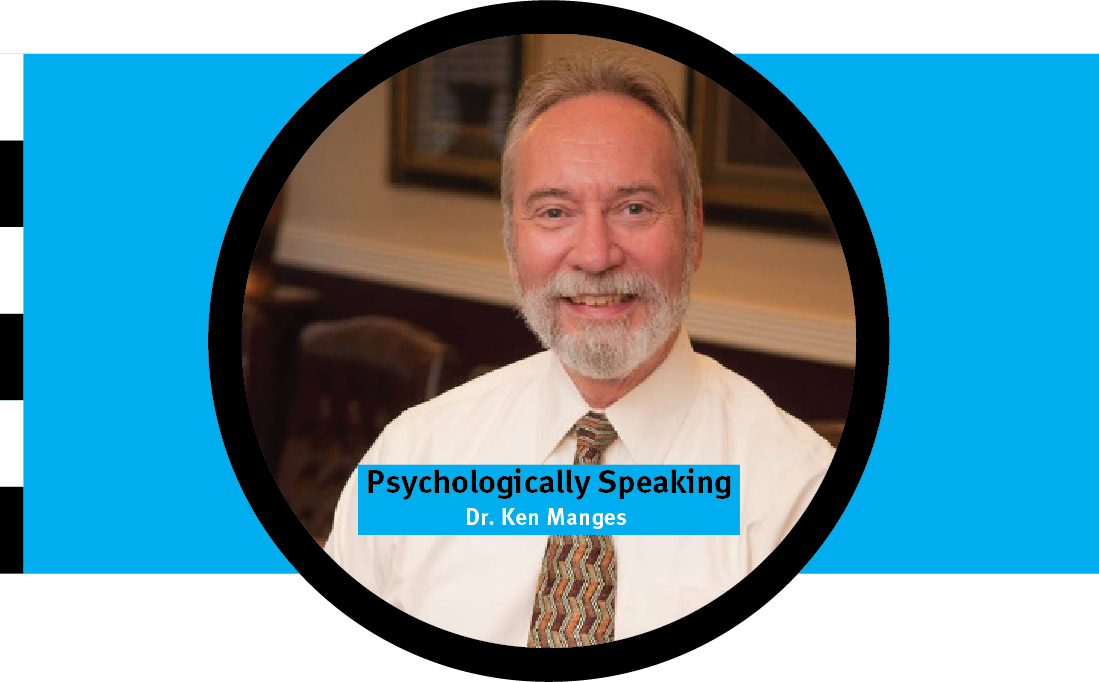A confluence of events.
On vacation for the holidays, I traveled to Kiawah Island, South Carolina.
The island is a quiet place when there are no tourists around, and it has an active conservancy group protecting the marshes, sand dunes, native animals and the island’s natural beauty.
Luckily during this time of year there is only an occasional truck or siren distraction and because of the island’s geography absolutely no trains and (due to zoning restrictions) no motorcycles or blasting music is allowed.
Although some of the rules are an inconvenience, I’ve adjusted to accept the good with the less welcomed restrictions.
Overall, the quiet is a delightful contrast and relief to the more common noise and visual pollutants, which set me to reflect on the common noise and visual pollutants in my life when not on vacation.
Where does the most harmful sound come from?
According to the National Institute of Health, “Sound is measured in units called decibels (dB), just as height is measured in feet or inches. Because people can’t hear all frequencies, or pitches of sound, A-weighted decibels (dBA) can be used to describe sound based on what human ears can actually hear.”
Noise adds up over a lifetime. If you are often exposed to loud sounds, your risk for permanent damage grows over time. Even a single but long-lasting or extremely loud event can cause damage. Sounds at or below 70 dBA are usually considered safe.”
Below is a chart that shows the common sound, and the decibel (dB) rating attached to each.

Kiawah has an active conservancy group. They have launched a number of projects to protect the environment from waterborne toxins, dune loss, wetlands protection, and bobcat as well as alligator survival. I am not a fan of the alligators being near residents, but I actively support the other protective measures.
Two pollutants which the conservancy enthusiasts address, which this column is about, are noise and artificial light. It is amazing how these two common sensory experiences physically and psychologically impact us on an everyday basis.
What is a pollutant?
Wikipedia defines a pollutant as “a substance or energy introduced into the environment that has undesired effect, or adversely affects the usefulness of a resource. These can be both naturally forming (i.e. minerals or extracted compounds like oil) or anthropogenic in origin (i.e. manufactured materials or byproducts). Pollutants result in environmental pollution or become of public health concern when they reach a concentration high enough to have significant negative impacts.
A pollutant may cause long or short-term damage by changing the growth rate of plant or animal species, or by interfering with resources used by humans, human health or wellbeing, or property values. Some pollutants are biodegradable and therefore will not persist in the environment in a long term.”
Noise pollution is an omnipresent yet frequently overlooked sensory stimulant caused by humans.
Noise pollution comes from our need to have the products and services we want, where and when we want them. Unfortunately, our demands can produce unwanted and/or harmful sound levels. The effect of noise on humans can be immediate, sometimes blessedly short lived (e.g., short warning blasts), but those above 70 dB’s can be harmful when cumulative (excessive noise over time for musicians, workers operating machinery and soldiers firing weapons without ear protection) can result in hearing impairment or deafness.
The prevalence of noise pollution has surged over the centuries in urban, suburban and rural communities. Cities have their roadways, above and below ground trains, and airports. Rural areas are not immune to the noise polluting effects from agricultural machinery, and wind farms.
Arline Bronzaft writing for the Journal of Acoustical Society of America, Vol. 115 in May 2004, in her article, “Noise Pollution: A threat to our mental and physical wellbeing,” said “While noise may not yet be in the forefront of the environmental movement, it is being recognized worldwide as a major environmental pollutant. In New York City, noise is the number one quality of life complaint, far outweighing other quality of life complaints, and throughout the United States it has been noted as a major reason for people moving from their homes. Although there is a need for additional research to confirm the health/noise link, the World Health Organization has already recognized noise pollution as a serious health issue. There is certainly sufficient research to warrant warnings that noise is injurious to mental and physical health. Yet, despite this growing body of literature attesting to the relationship between noise and health impacts, government bodies have not yet invested the dollars needed to abate noise nor to educate people to the dangers of noise. Organizations such as the League for the Hard of Hearing, the Noise Pollution Clearinghouse, and the United Kingdom Noise Network have assumed the tasks of educating the public to the harmful effects of noise, of advocating anti-noise measures, and of urging public officials to move more assertively in lessening the din of our ever-increasing noisy society.”
The fundamental purposes of our being able to hear is to alert and to warn us of normal sounds or pending harm.
Jack Westman and James R. Walters writing in the journal of Environmental Perspectives back in October 1991 in their article titled “Noise and Stress, a Comprehensive Approach” said, “The processing of sound by the brain is (intended) to provide a biological and psychological basis for understanding the way in which sound can become a human stressor. The auditory orienting response, startle reflex and defensive response translate sound stimuli into action and sometimes into stress-induced bodily changes through ‘fight or flight’ neural mechanisms. The literature on the health and mental health effects of noise found that “noise sickness” is a real phenomenon. The syndrome is manifested by tinnitus (a ringing in the ears), increased sensitivity to noise, fatigability, lowering of general resistance to illness, headaches, irritability, sleep interference, heart pains, weight loss, tremors, digestive disorders and ultimately hearing loss. These symptoms are based upon the stress responses of the auditory, autonomic, cardiovascular, endocrine, and gastrointestinal systems and precede the actual loss of hearing.”
Westman and Walters conclude that the “harmful effects of noise have suffered from the lack of a full appreciation of the ways in which humans process and react to sound. We are short sighted (to use another sensory organ) in our appreciation of just how problematic excessive noise is to our physical health.”
What’s the psychological consequences of excessive noise?
Sheldon Cohen and Neil Weinstein in the Journal of Social Issues, in their 1981 article, “Non auditory Effects of Noise on Behavior and Health” defined noise as a psychological concept …Sounds can be unwanted because of their physical properties, e.g., intensity, frequency, and intermittency, or because of their signal properties, i.e., their meaning. Unwanted effects of sound that are related to its physical properties include the masking of wanted sound, auditory fatigue and hearing damage, excessive loudness, bothersomeness and startle. Recent data also suggest that the meaning of a sound plays an important role in determining its effects on annoyance, performance and possibly health. Thus, even fairly loud sounds may sometimes be viewed as desirable, while relatively soft sounds can be viewed as noisy. For example, while your neighbor might enjoy listening to an album of rock music at 110 decibels, you might find the same physical stimulus quite aversive, and while the sound of a couple whispering during a theater performance may be barely audible, it may also be reacted to as an intruding noise.”
What’s self-control got to do with it?
Cohen and Weinstein go on to say, “the ability to predict and control the occurrence of the noise mediates both psychological and physiological response. Hence, unpredictable noise is more likely to disrupt performance, to lead to variable performance, to be reported as annoying, and to be linked with pathological response, than predictable noise. One’s perception that a noise is controllable, i.e., that it can be escaped or avoided, can eliminate post-exposure deficits in task performance and interpersonal sensitivity. Perceptions of control also play a role in reported annoyance and may be an ameliorative factor in noise-induced disease.”
In addition, Cohen and Weinstein say “The respondent’s perception of the role of noise in a particular context is also important in mediating the relationship between noise and human response. Noise that is perceived as disruptive of an important goal, unnecessary, representative of something that is feared or loathed and is produced without concern for the respondent is more likely to elicit stress-related responses than noise without these characteristics.”
In other words, if we know we can escape or control the noise we can tolerate it for a longer period of time and its impact will not have as lasting an impact as those noises we can’t control.
The World Health Organization estimates that 1.6 million years of healthy living are lost every year in Europe because of noise pollution.
Some cities, like New York have a panel that provide direction and suggestions to the transit authority, other agencies as well as next door neighbors to reduce or stop noise pollution. The panel has been successful in making architectural changes to schools to help improve classroom environments and to help the transit authority implement sound reducing track modifications.
Changing sensory pollutants, let’s look at light as a harmful stimulus.
On Kiawah, you remember, that island in South Carolina, has a warning about excessive light at night on the beach.
Why on the beach?
As nature meant it to be, the sea turtles come ashore to lay their eggs and when the eggs hatch they instinctually head for the ocean unless of course… as noted by Ed Yong in the July/August Atlantic 2022 article, “How Animals Perceive the World,” wrote “as sea turtle hatchlings emerge from their nests, they crawl away from the dark shapes of dune vegetation toward the brighter oceanic horizon. But lit roads and beach resorts can steer them in the wrong direction, where they’re easily picked off by predators or squashed by vehicles. In Florida alone, artificial lights kill baby turtles in the thousands every year. They’ve wandered into a baseball game and, more horrifyingly, abandoned beach fires. The caretaker of one property in Melbourne beach found hundreds of dead hatchlings piled beneath a single mercury-vapor lamp.”
Mr. Yong goes on to say artificial lights can also “fatally attract insects, contributing to their alarming global declines. A single streetlamp can lure moths from 25 yards away. A well-lit road might as well be a prison. Many of the insects that gather around streetlamps will likely be eaten or die from exhaustion by sunrise. Those that zoom towards vehicle headlights will probably be gone even sooner. The consequences of these losses can ripple across ecosystems. … Illuminated flowers received 62% fewer visits from pollinating insects. One plant produced 13% less fruit even though it was visited by a day shift of bees and butterflies.”
Light pollution refers to the excessive, misdirected, or obtrusive artificial light that alters natural lighting in the environment. According to the environmental Protection Agency, light is categorized into four primary types.
Glare. The excessive brightness that causes visual discomfort.
Skyglow: The brightening of the sky over populated areas from industrial, commercial and residential properties.
Light Trespass: Unwanted or intrusive light entering an area, such as light spilling on the inside of a house from a room to a bedroom.
Clutter: Excessive grouping of bright lights commonly seen in urban areas with commercial signage.
What types of adverse light pollutants do you encounter most often?
The research on the impact of artificial light on humans is extensive. The disruption of sleep patterns caused by artificial light exposure is a significant concern for our mental health. Science shows that Artificial Light At Night (ALAN) suppresses the production of melatonin, a hormone critical for regulating sleep.
Joshua Gooley, Kyle Chambelain, Kurt Smith et.al. in the 2010 Journal of Clinical Endocrinology & Metabolism article “Exposure to Room Light before Bedtime Suppresses Melatonin onset and Shortens Melatonin Duration in Humans” say, “These findings indicate that room light exerts a profound suppressive effect on melatonin levels and shortens the body’s internal representation of night duration. Hence, chronically exposing oneself to electrical lighting in the late evening disrupts melatonin signaling and could therefore potentially impact sleep, thermoregulation, blood pressure, and glucose homeostasis.”
It turns out, according to Joshua Gooley, Kyle Chamberlain, Kurt Smith et.al., that “reduced melatonin levels can lead to insomnia, sleep fragmentation, and reduced sleep quality. Chronic sleep deprivation is closely linked to mental health disorders such as anxiety, depression, and mood instability.”
As we toast to a Happy Chanukah and a New Year consider the noise and light that surrounds you.
Wear ear protection while operating high frequency and loud machinery, adjust the volume when listening in the car and other closed settings, and turn down the lights when not otherwise needed. Like other celebrations, enjoy yourself in moderation this season so you can simultaneously enjoy them and protect yourself and the environment.
Thanks for reading the column.
Please go to the AI website (americanisraelite.com) and post a comment. Questions? Suggestions? Send me an email at psychology@americanisraelite.com. Be well. See you here next month.




